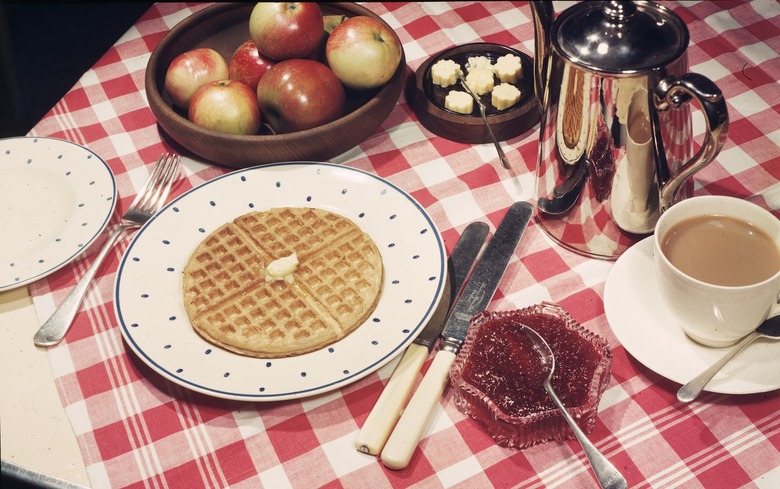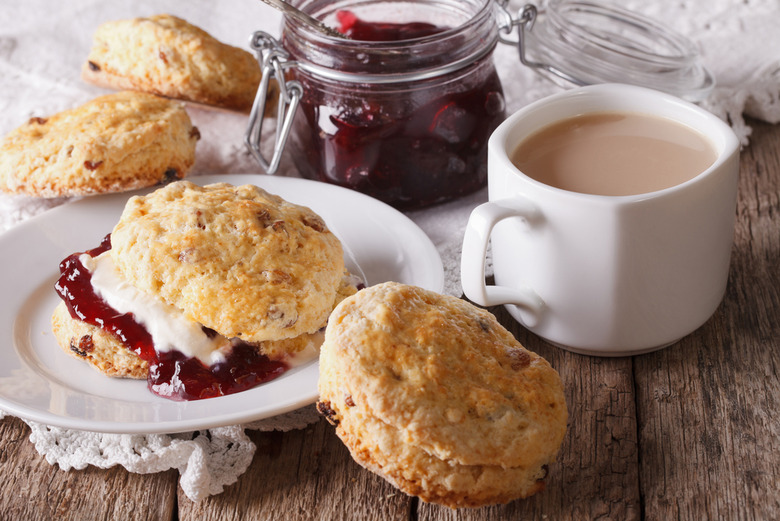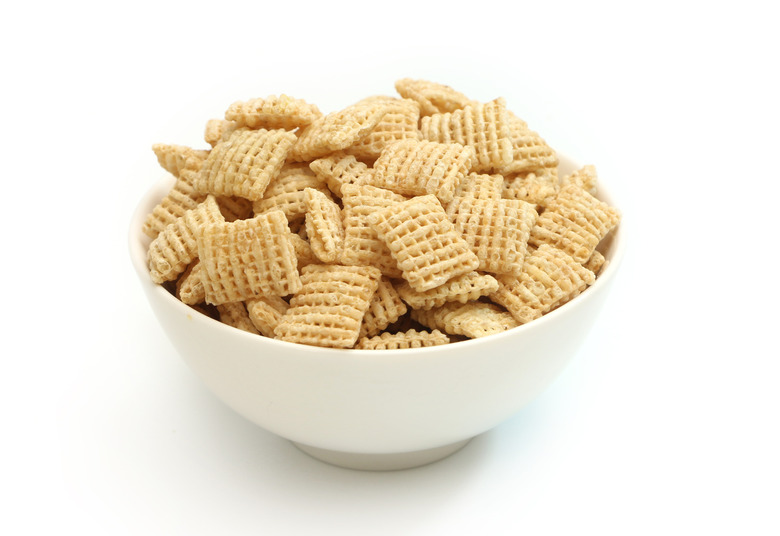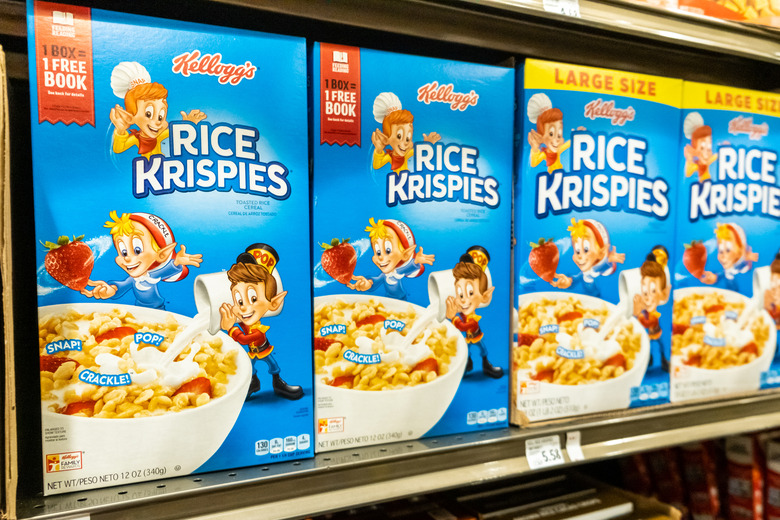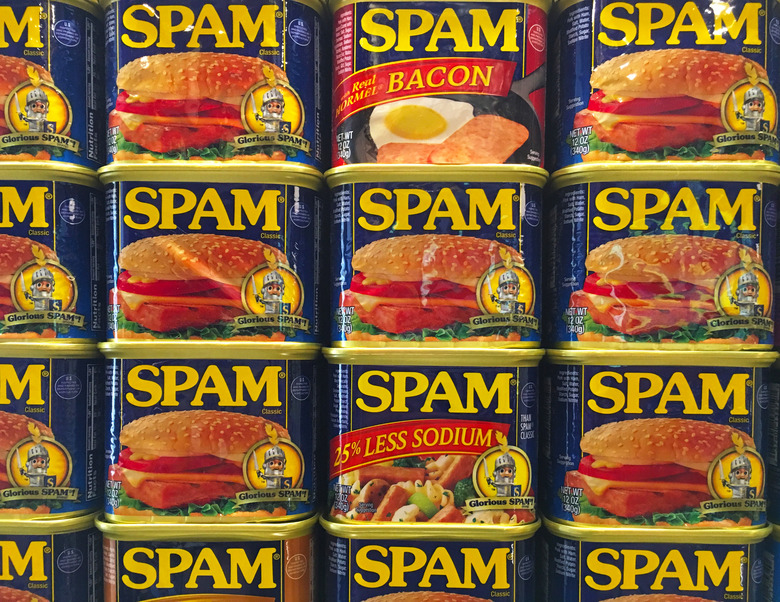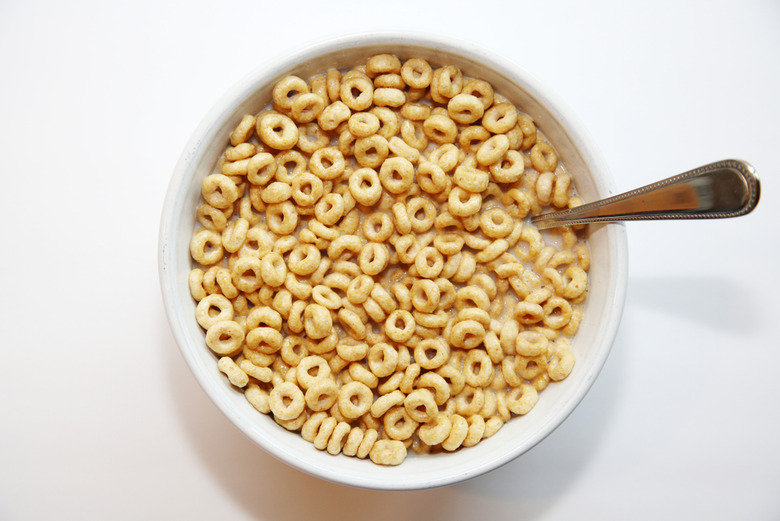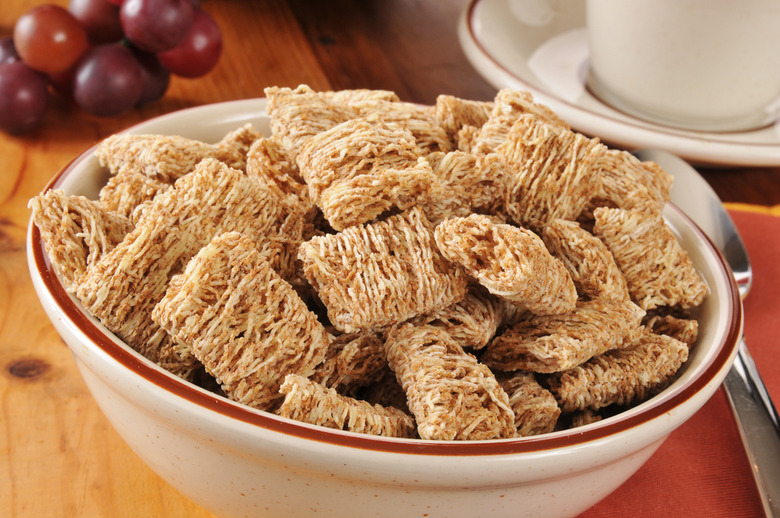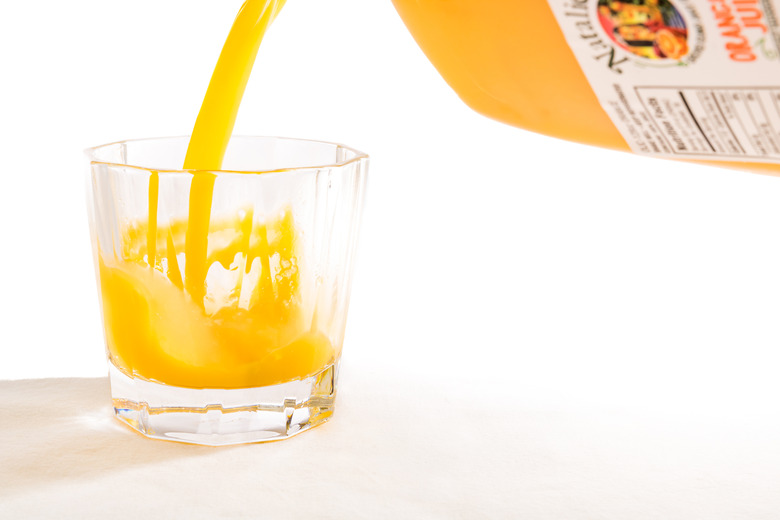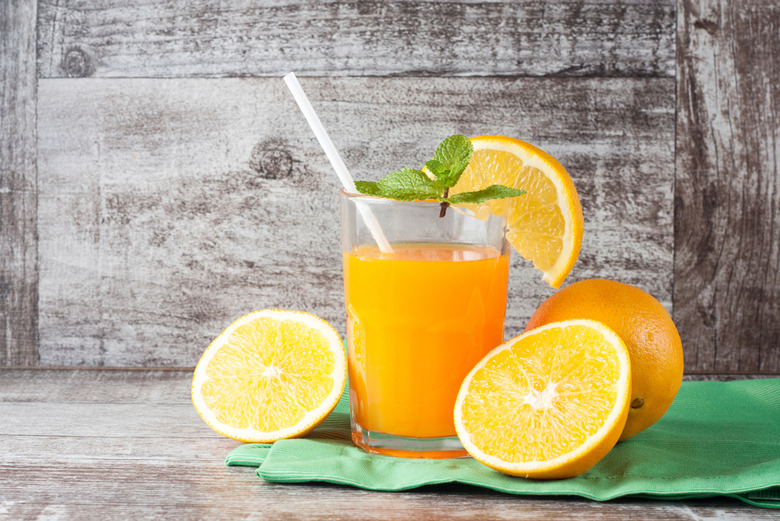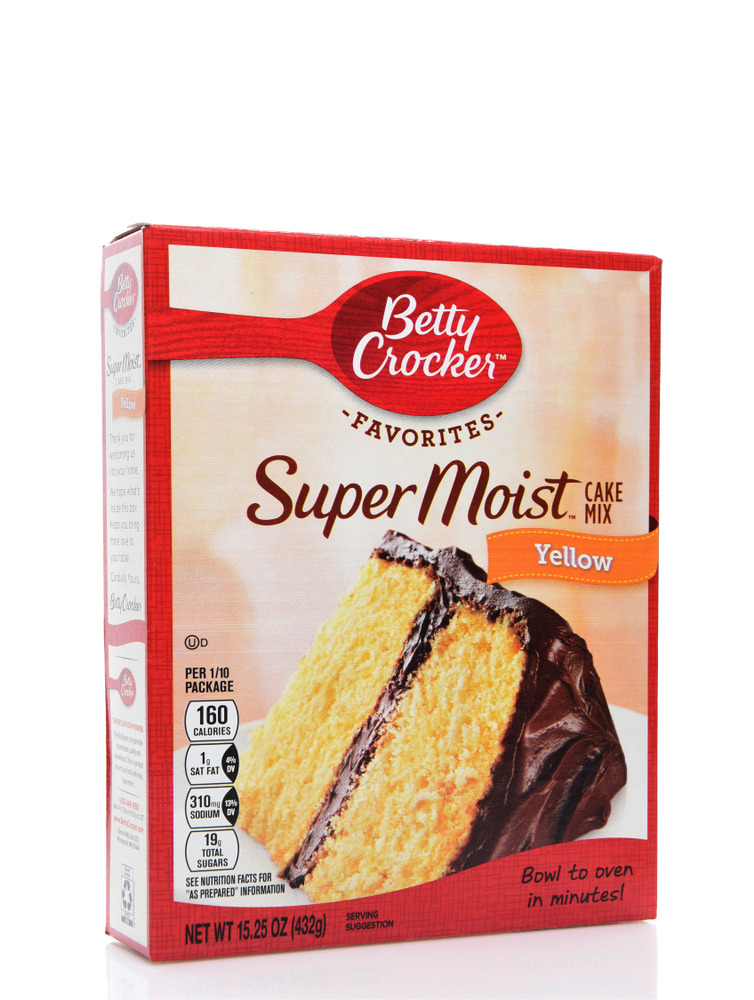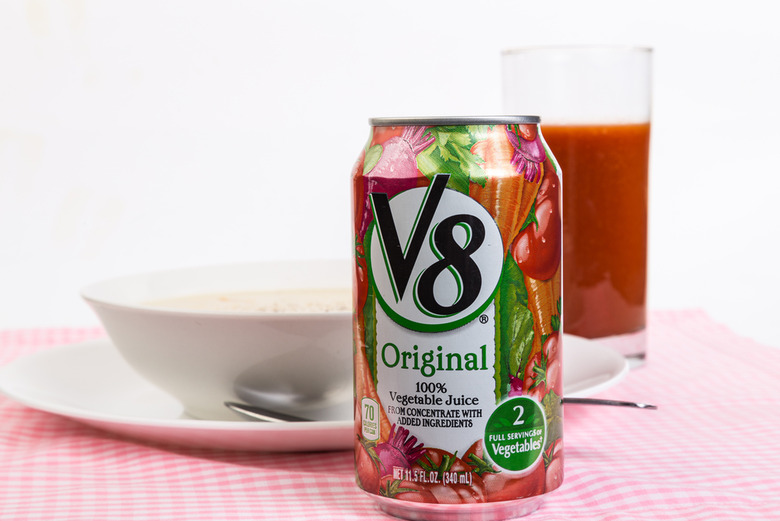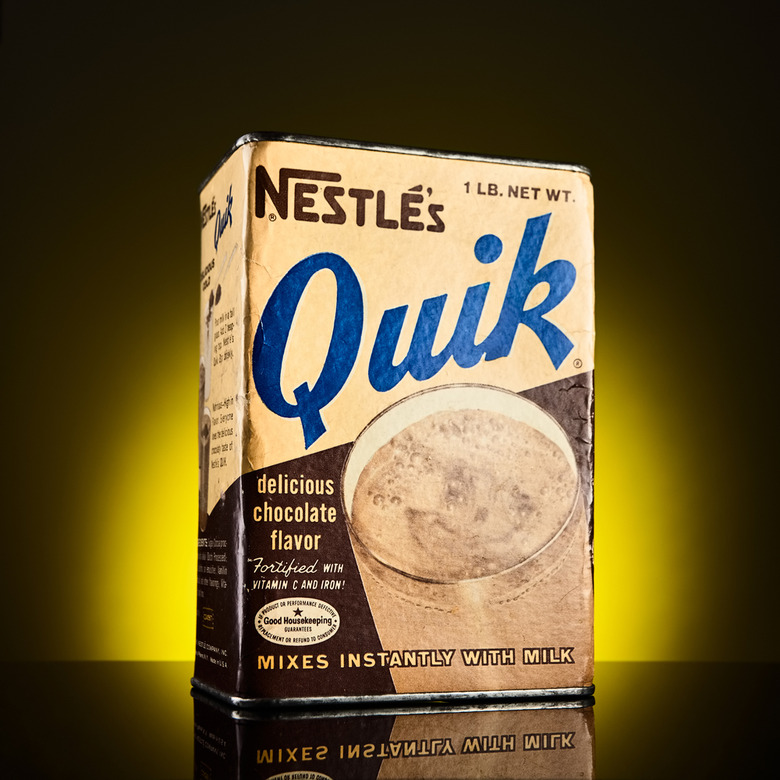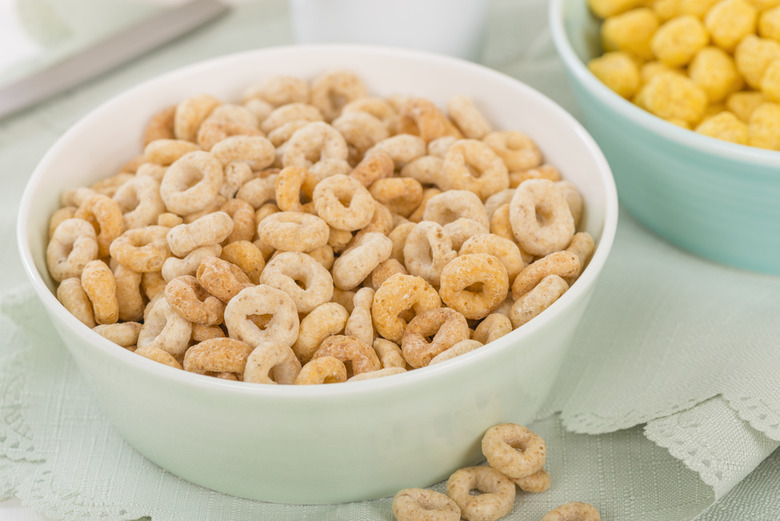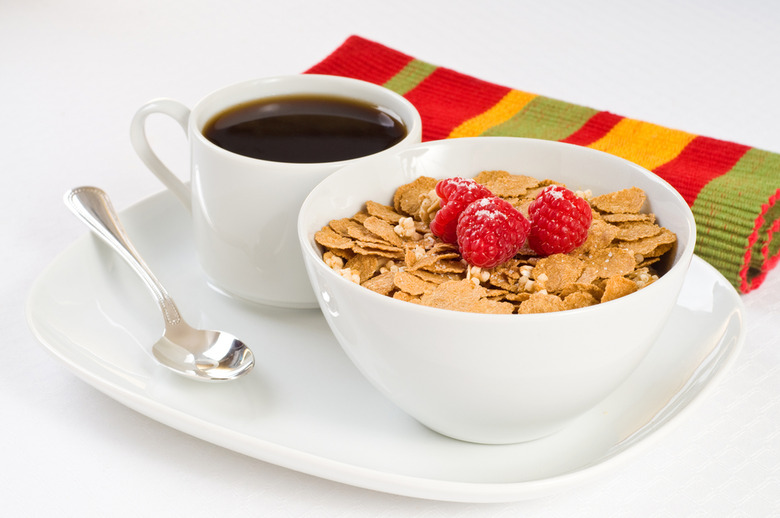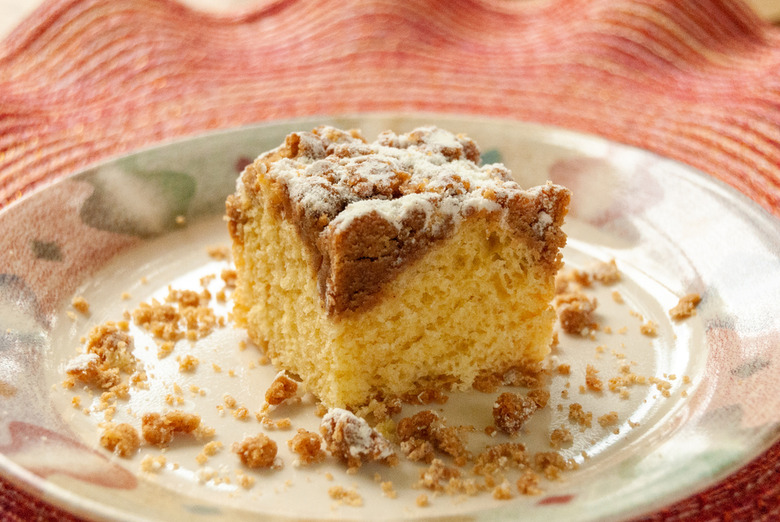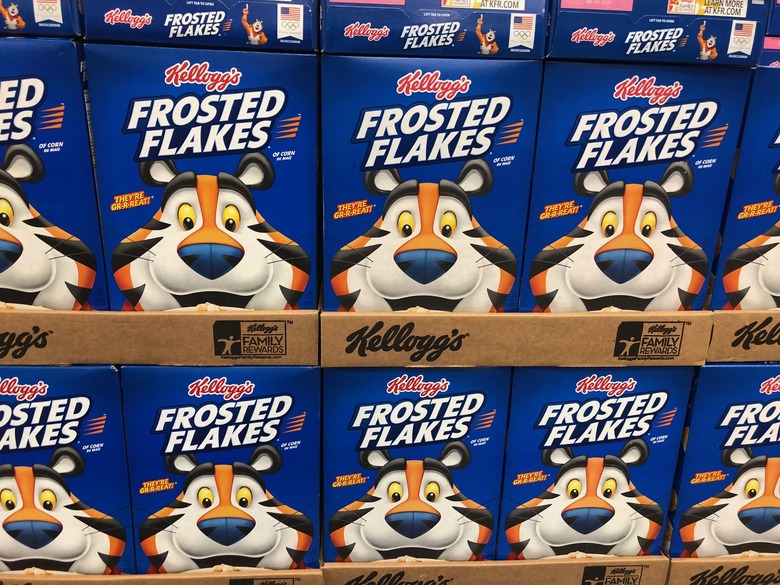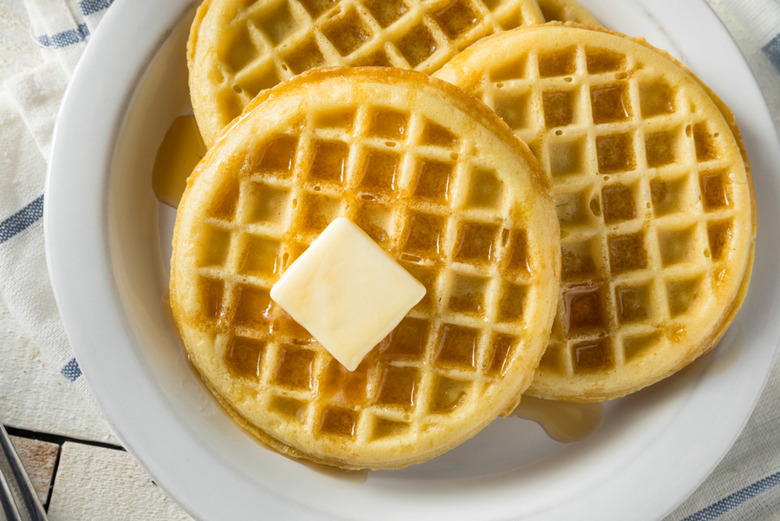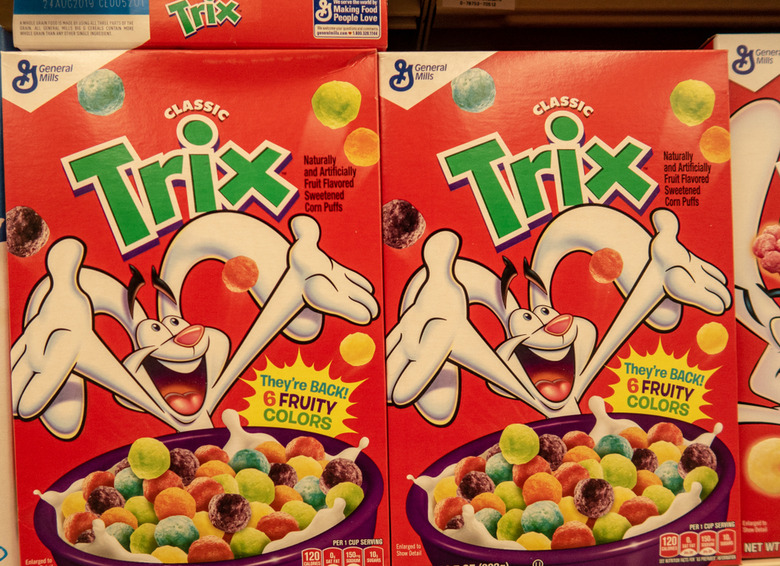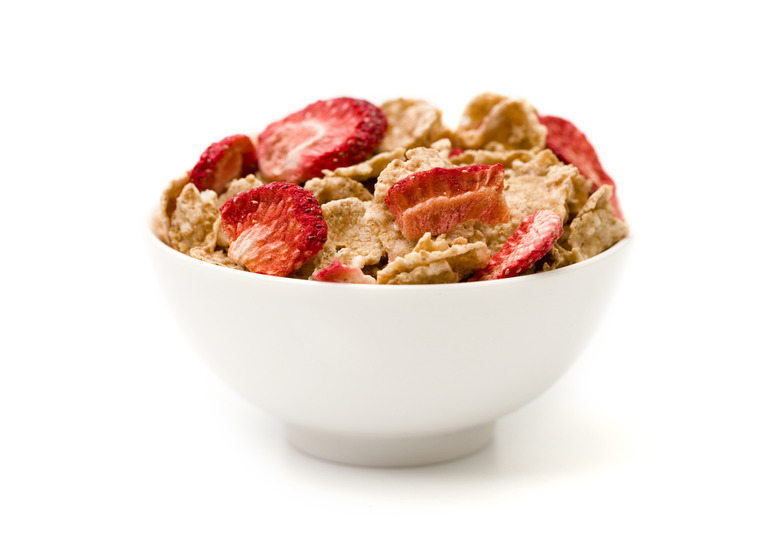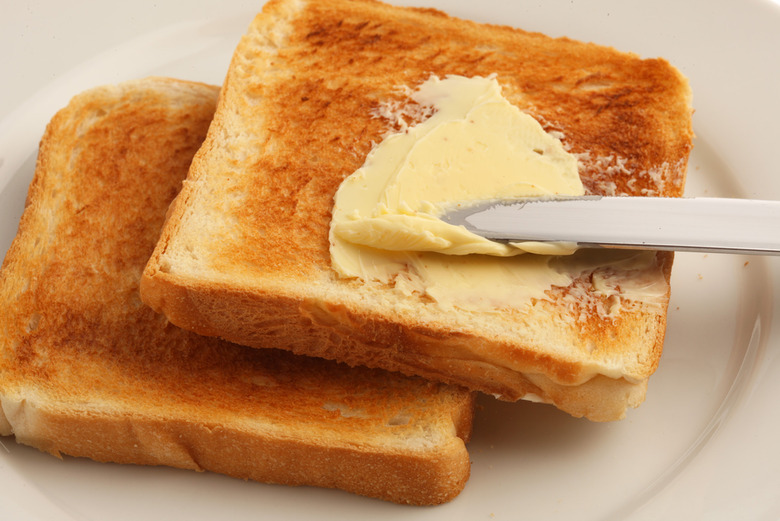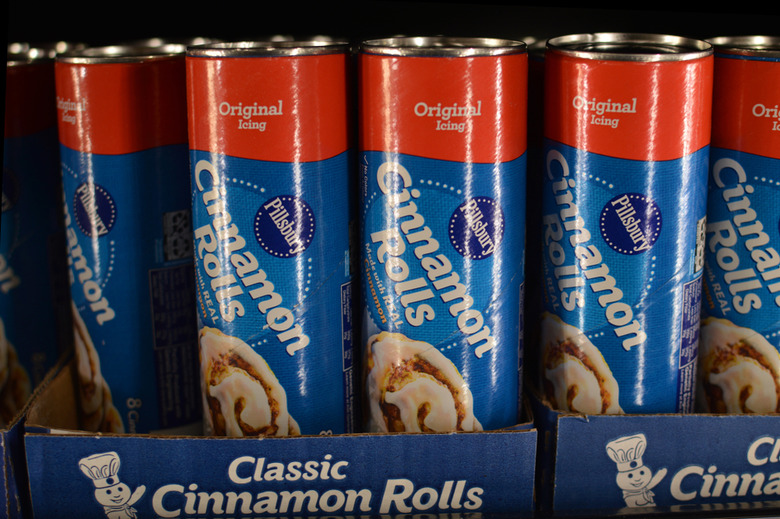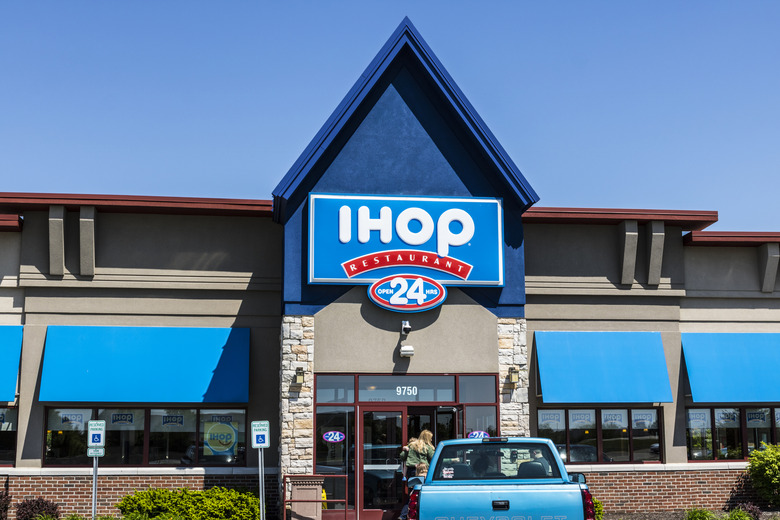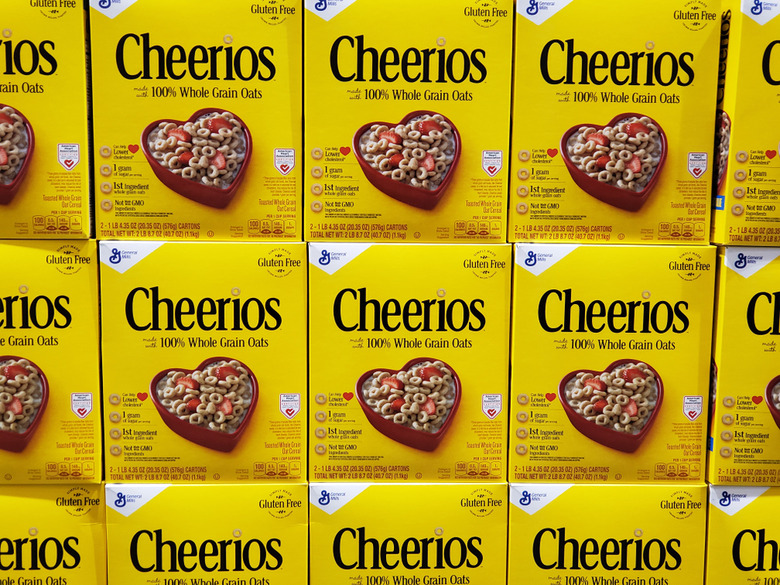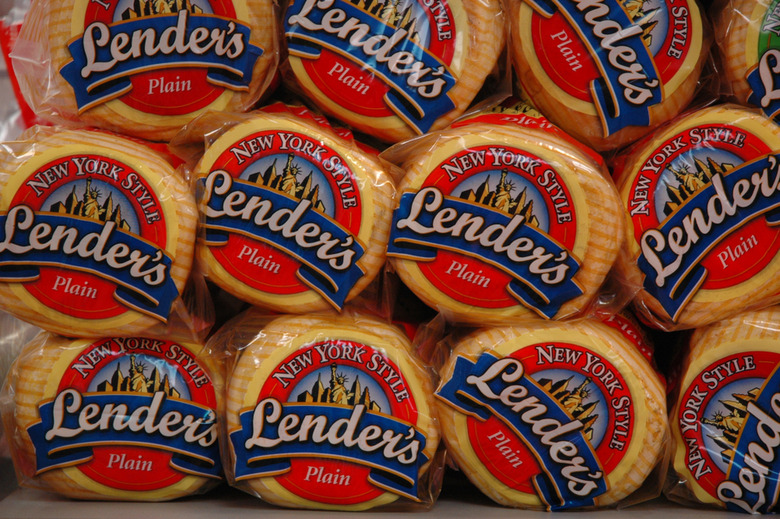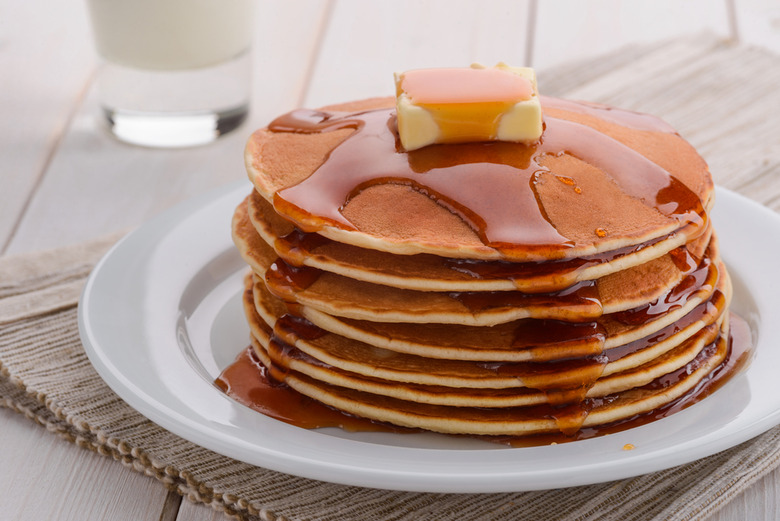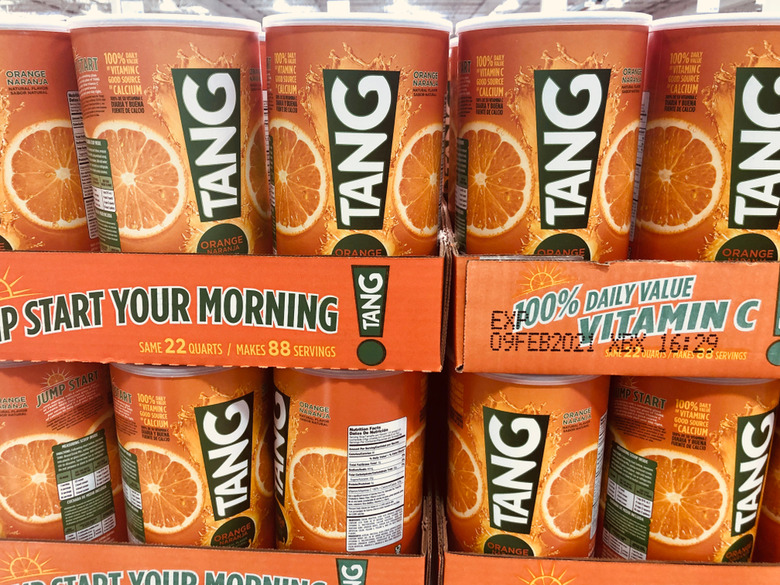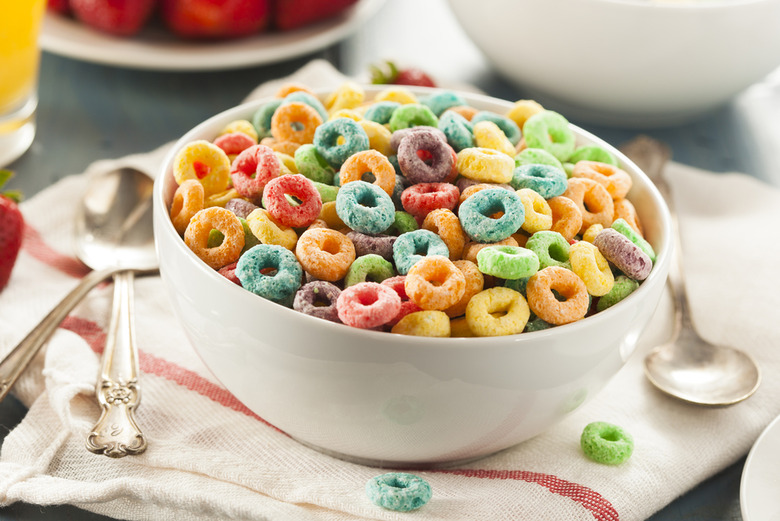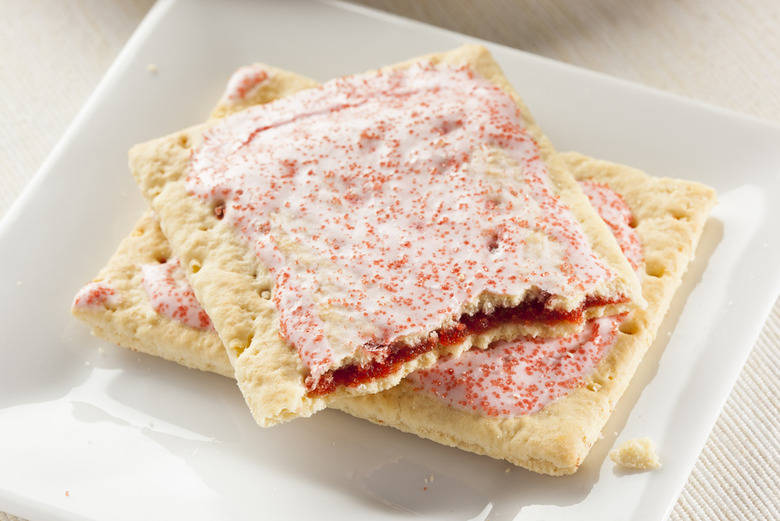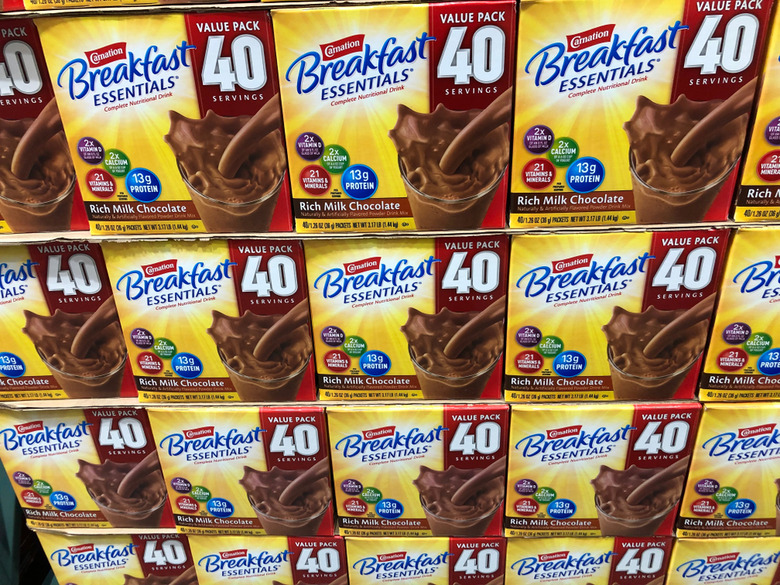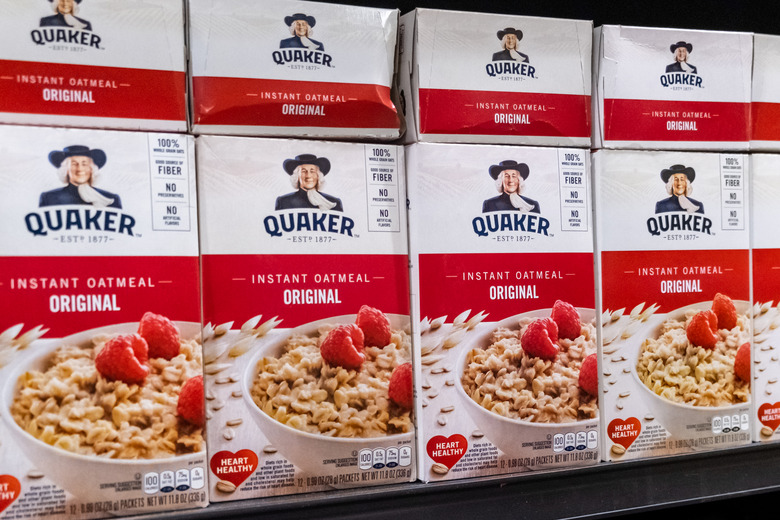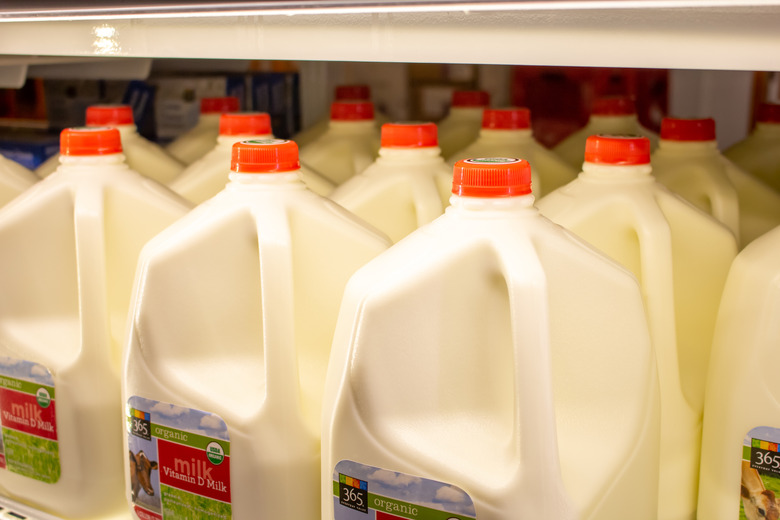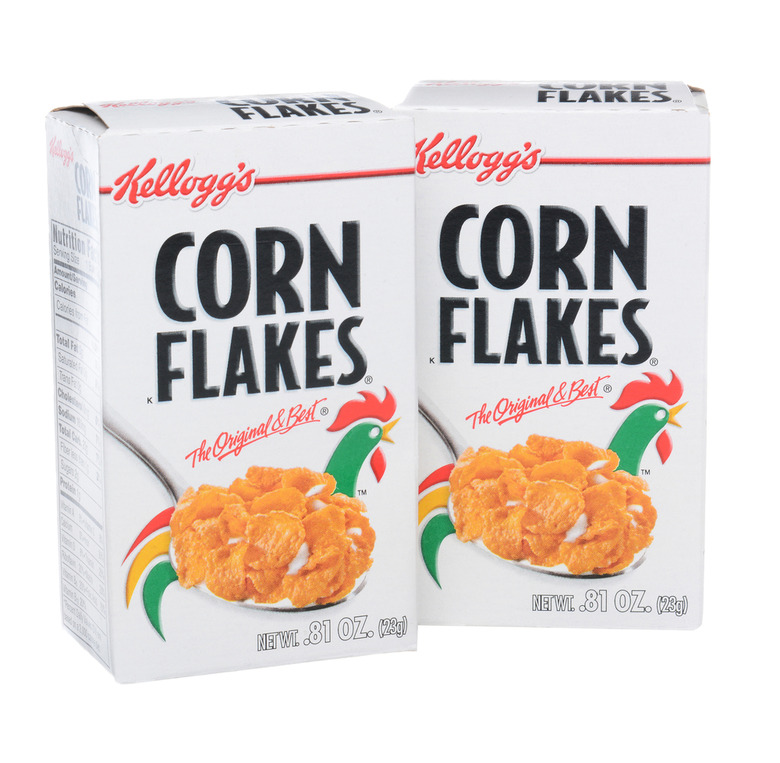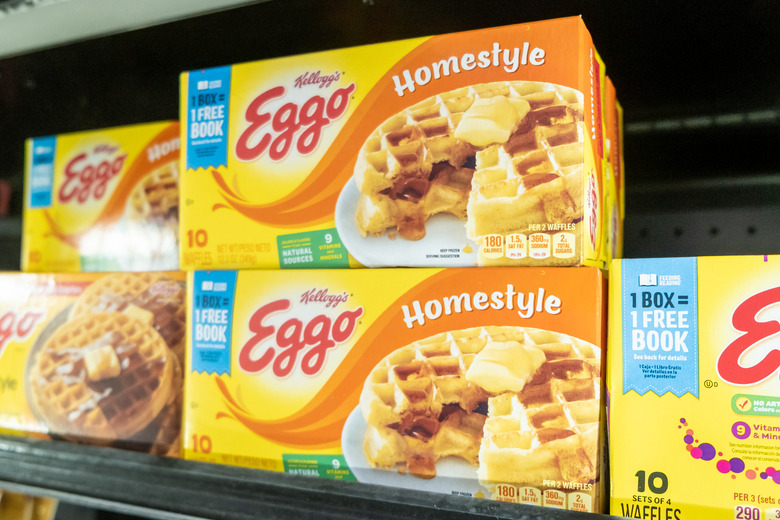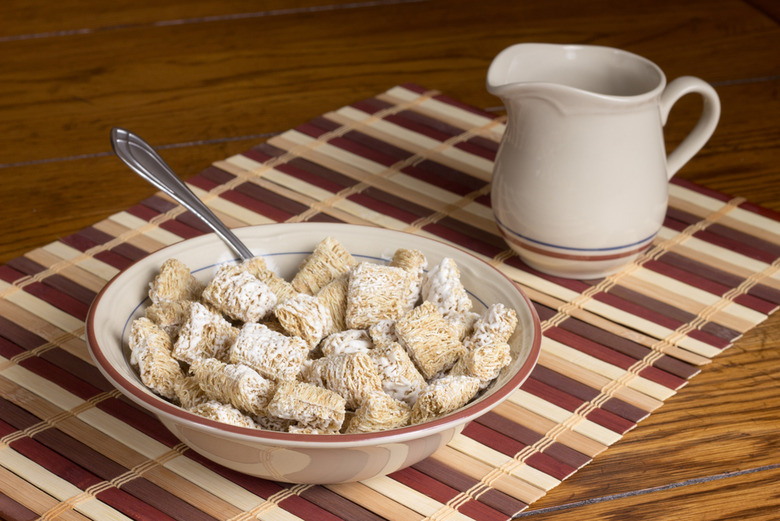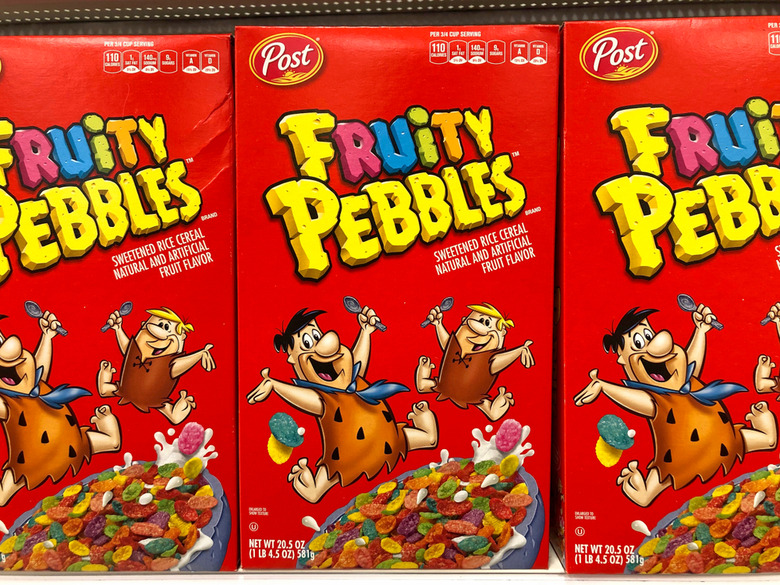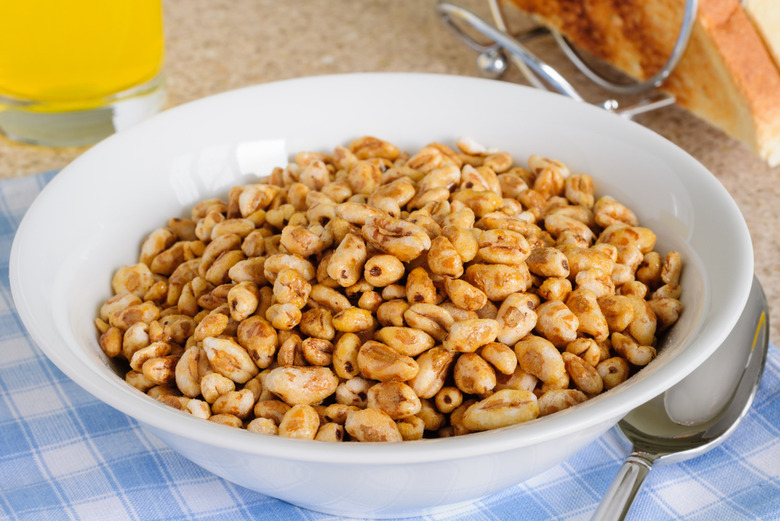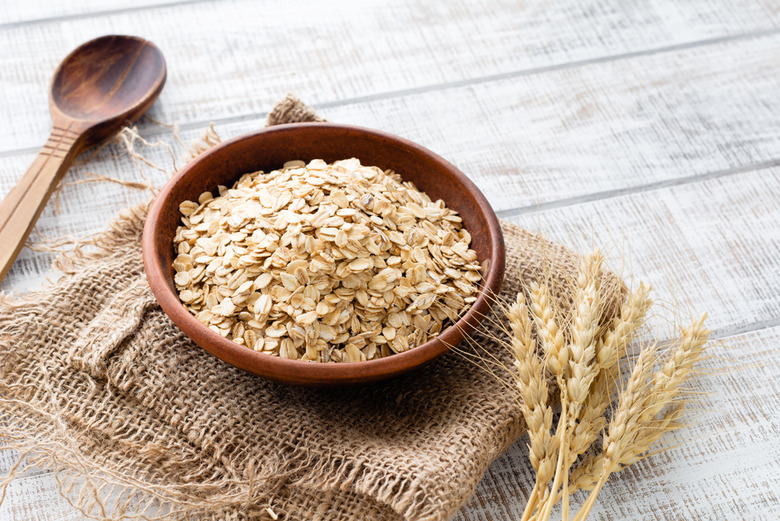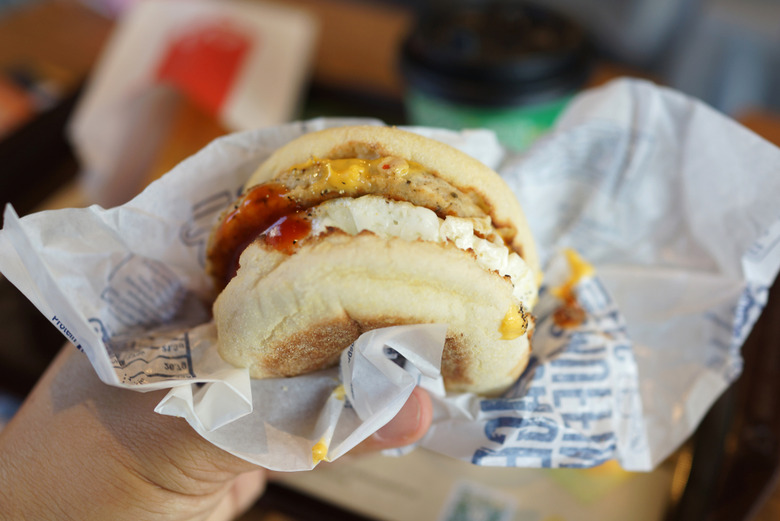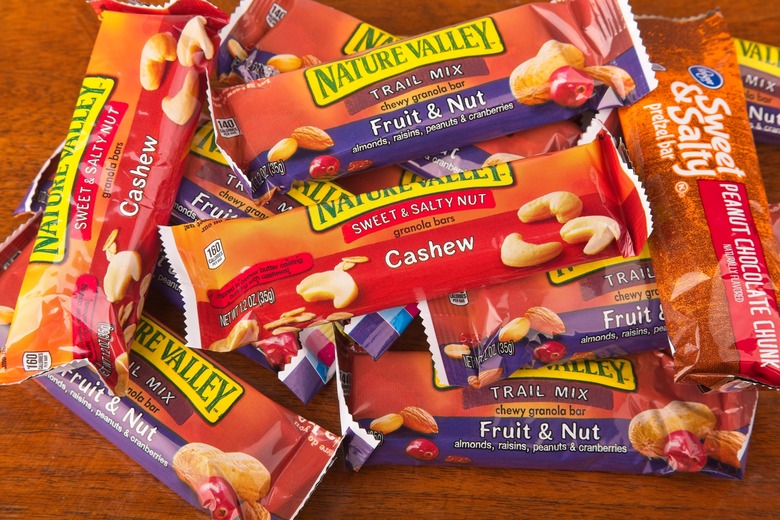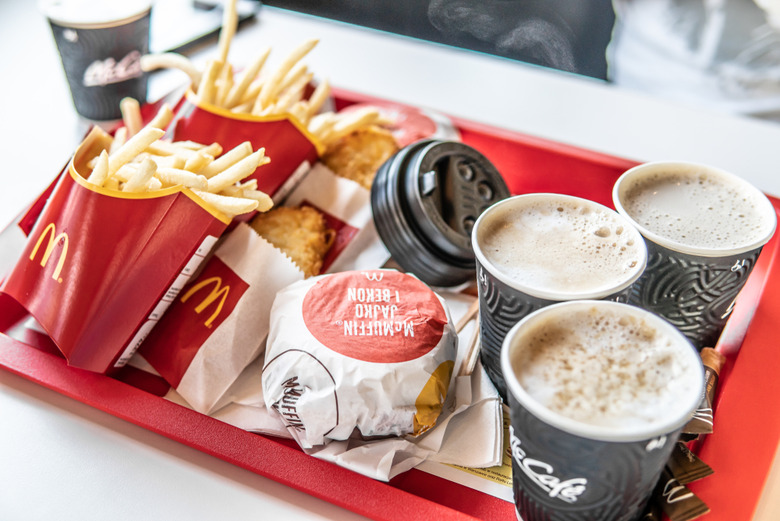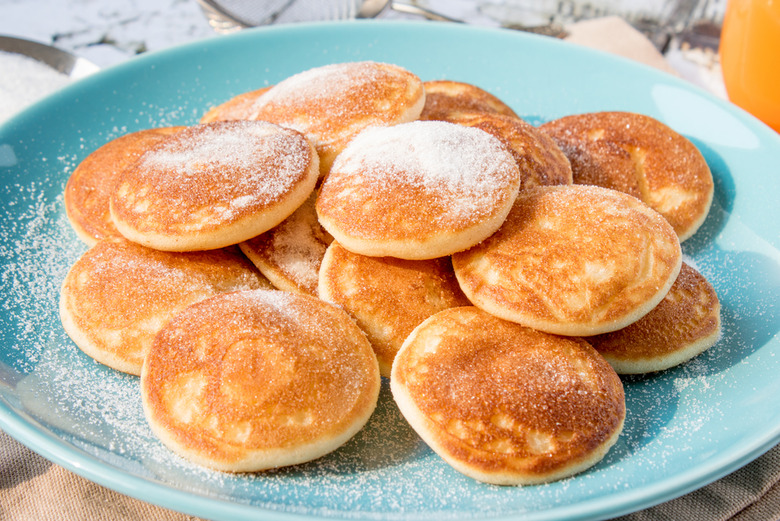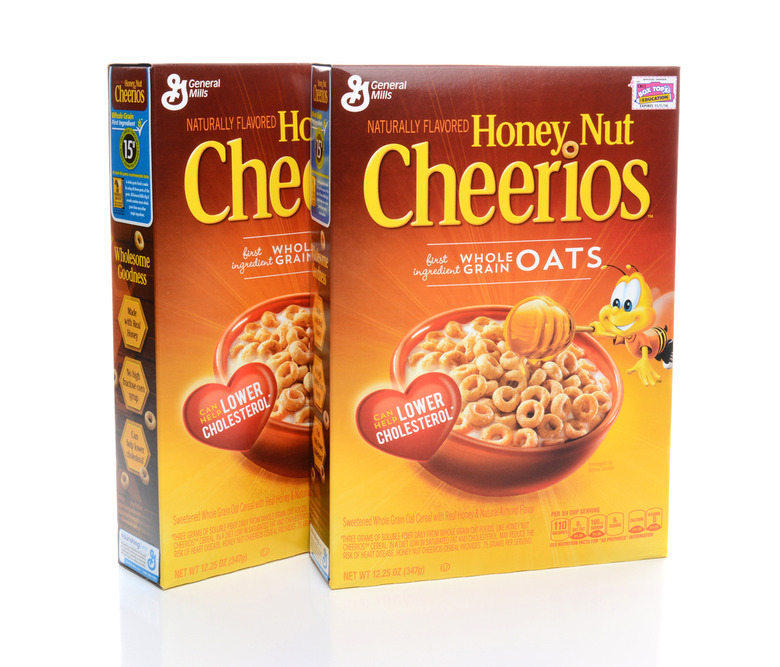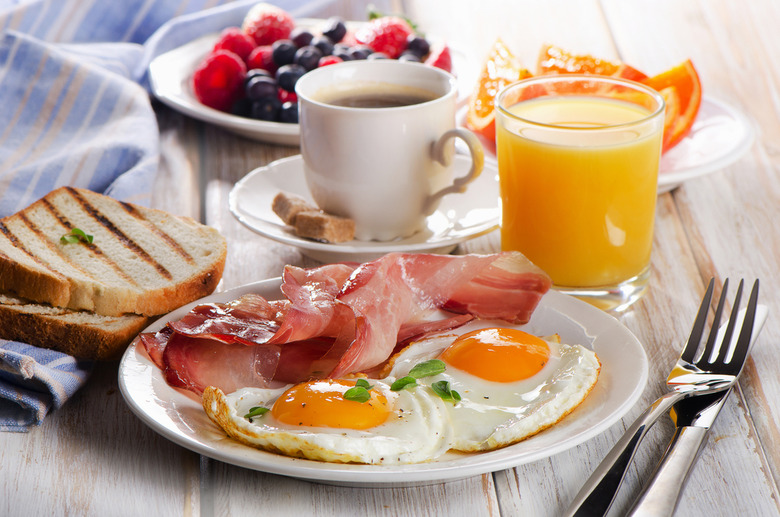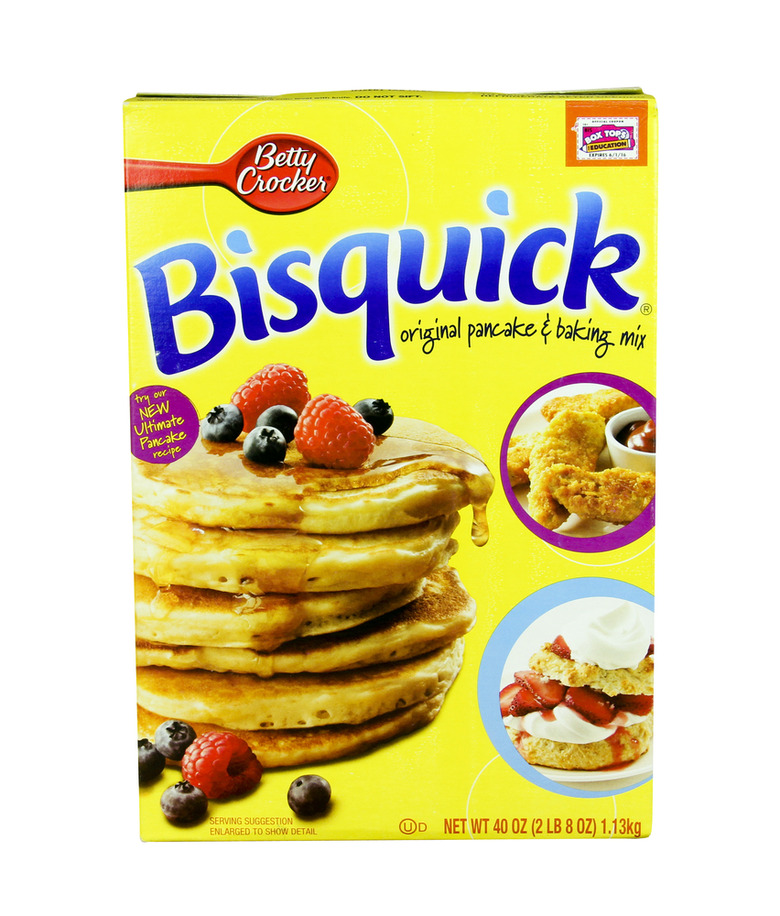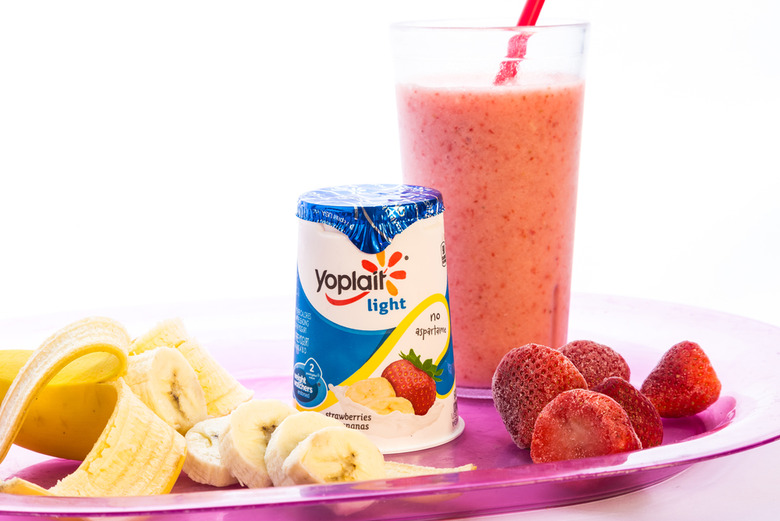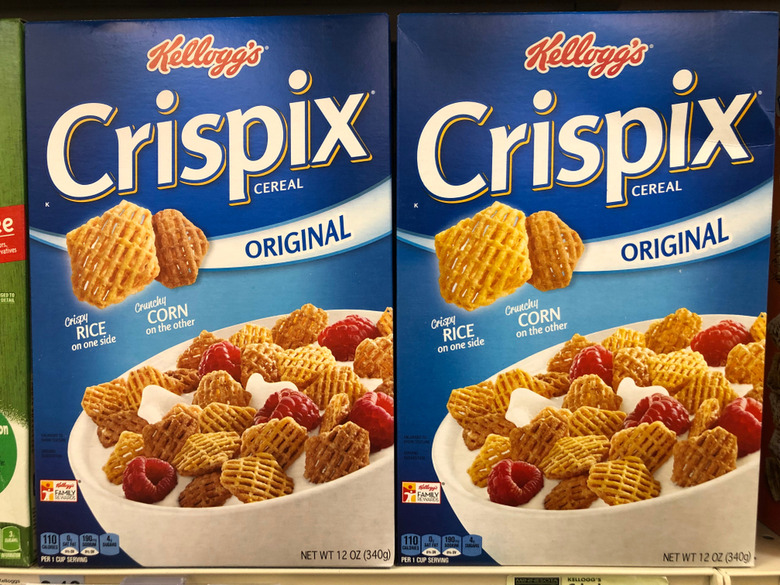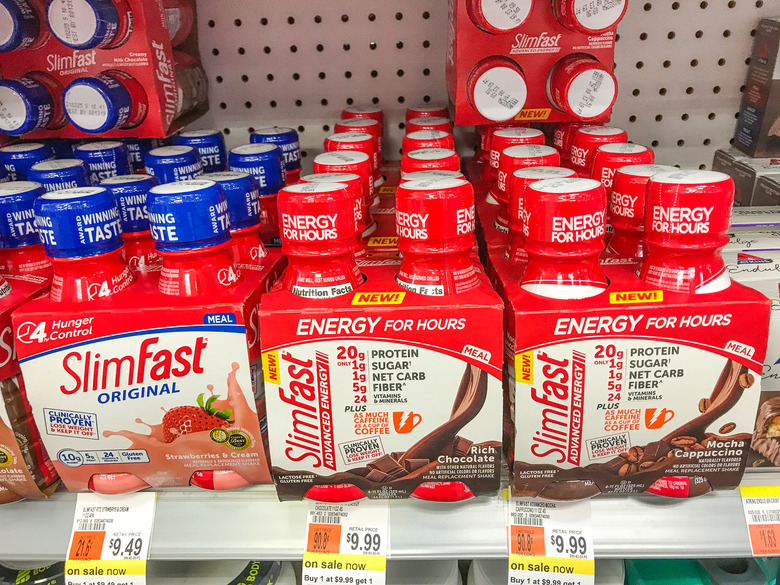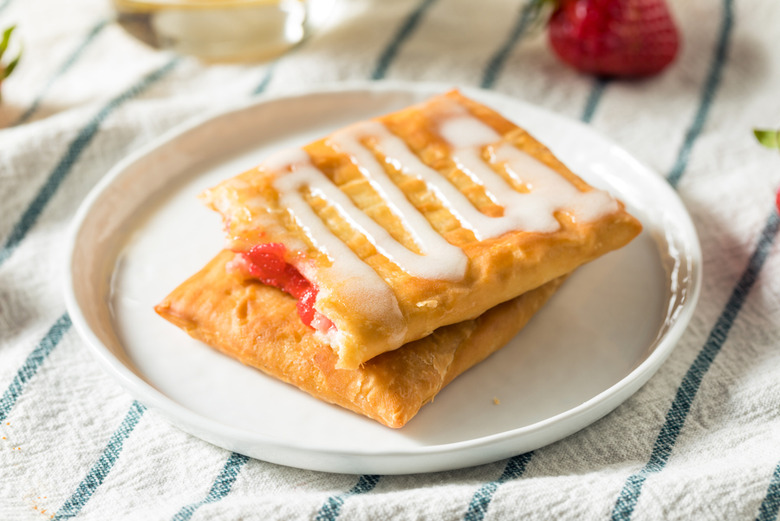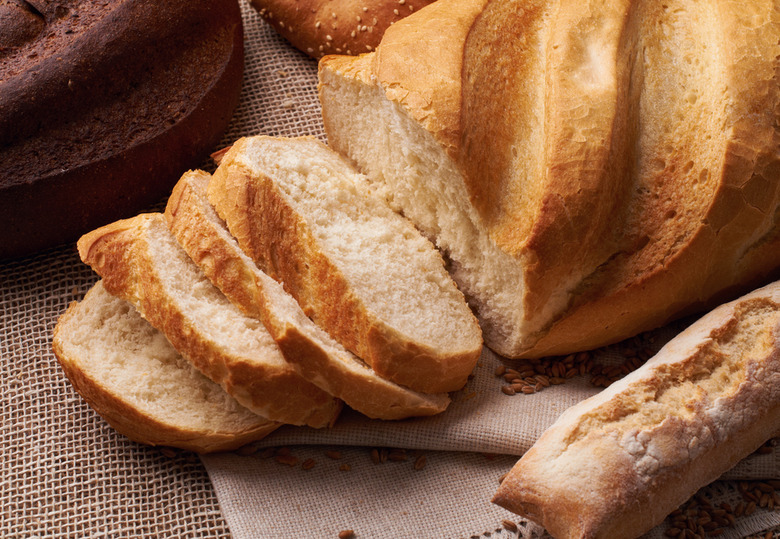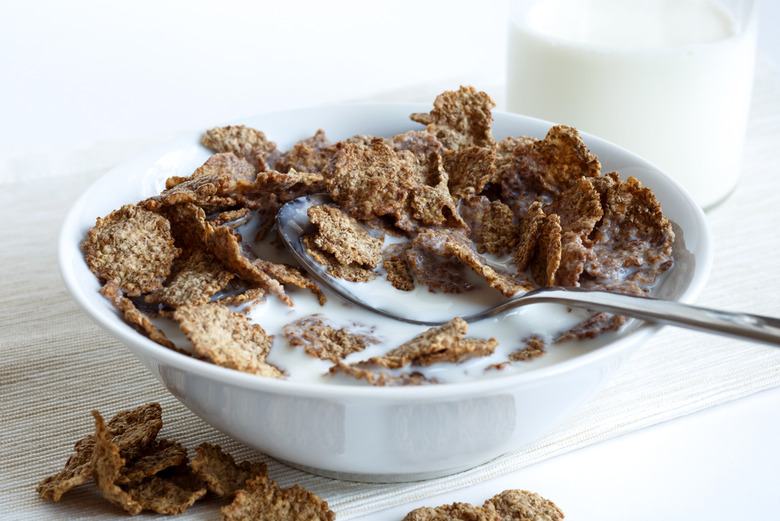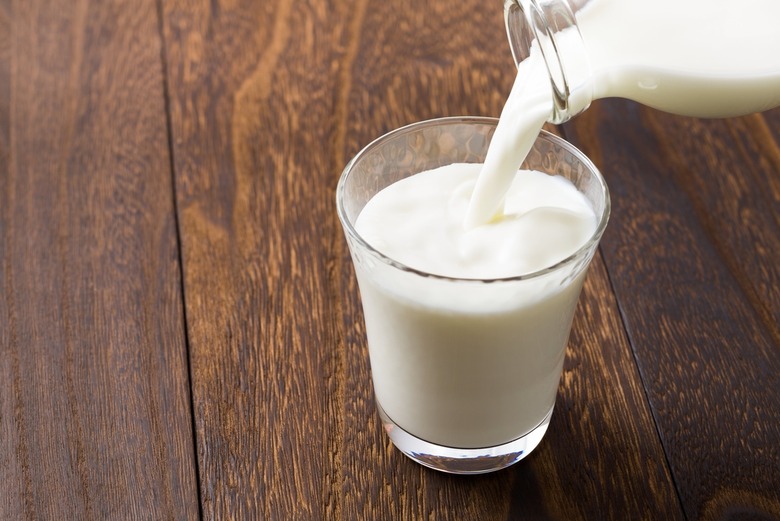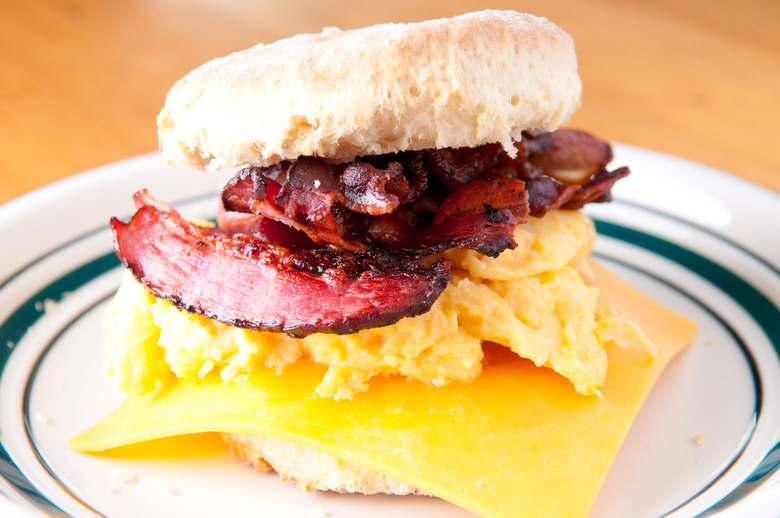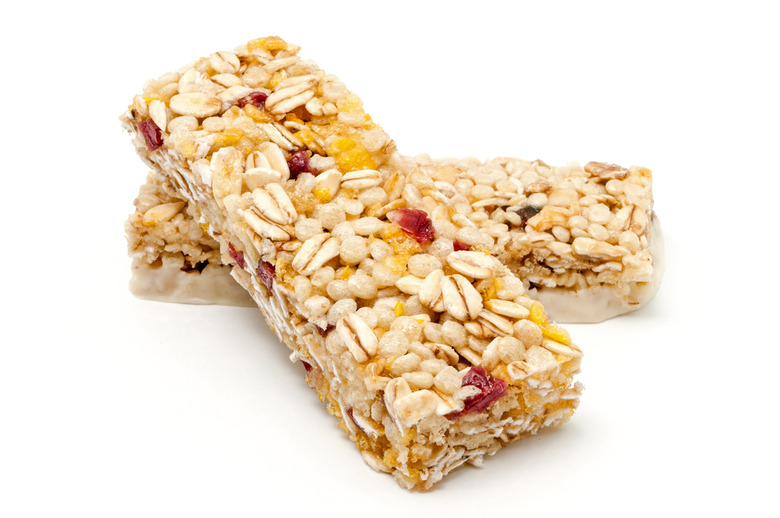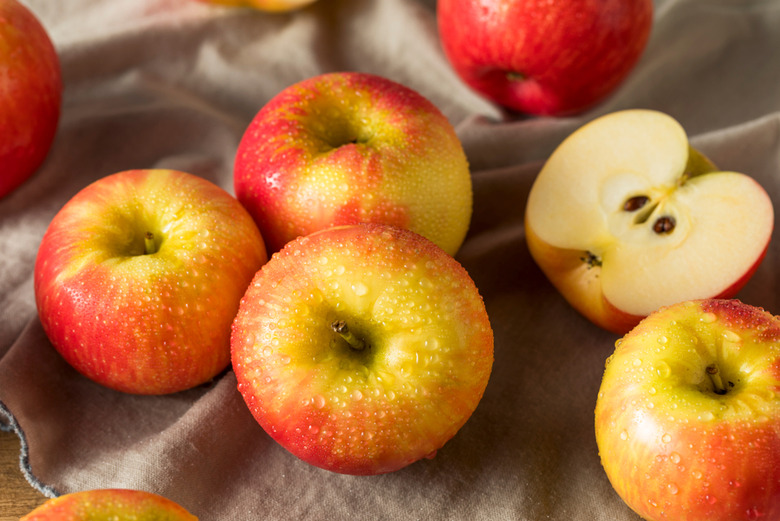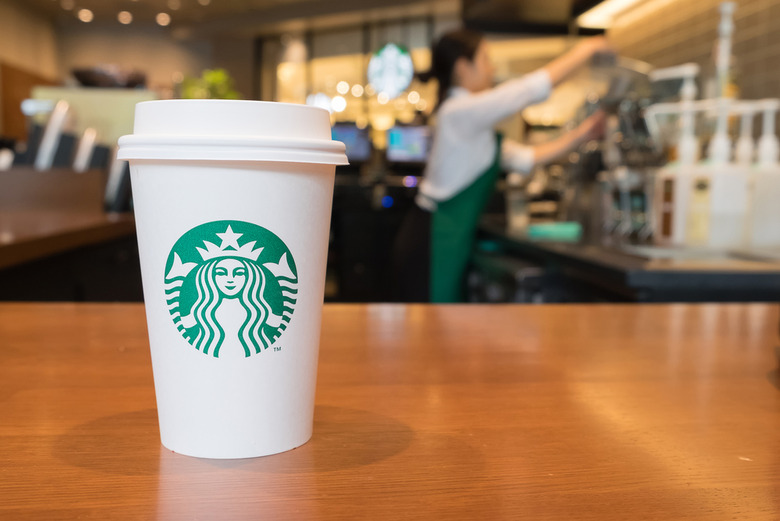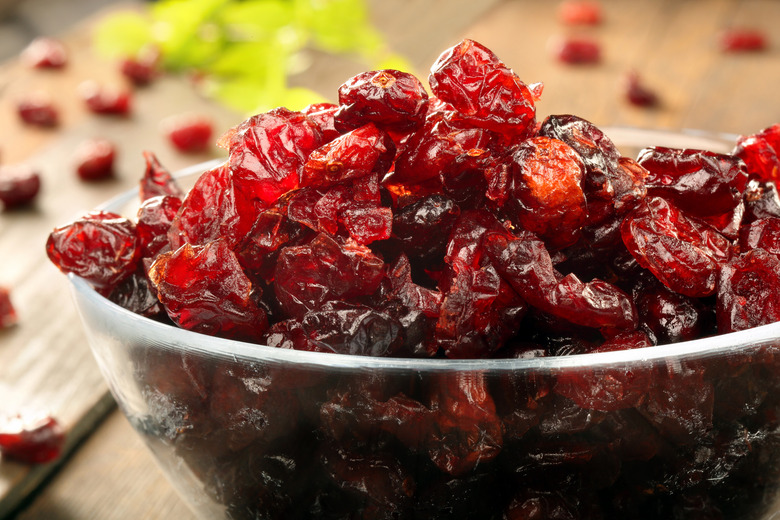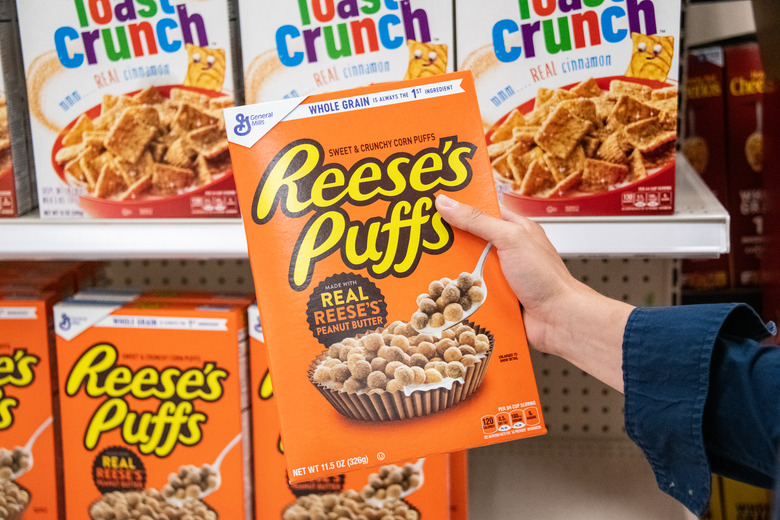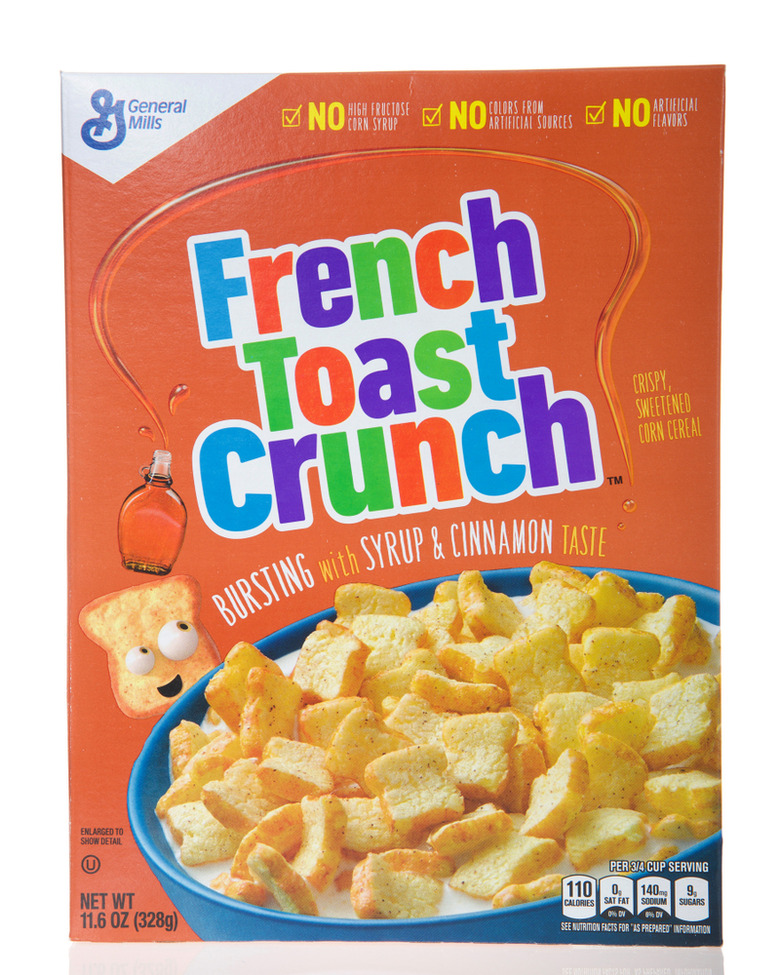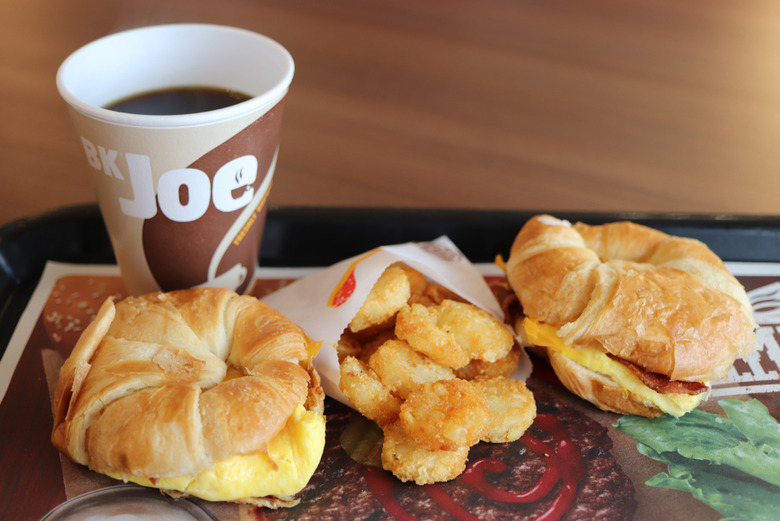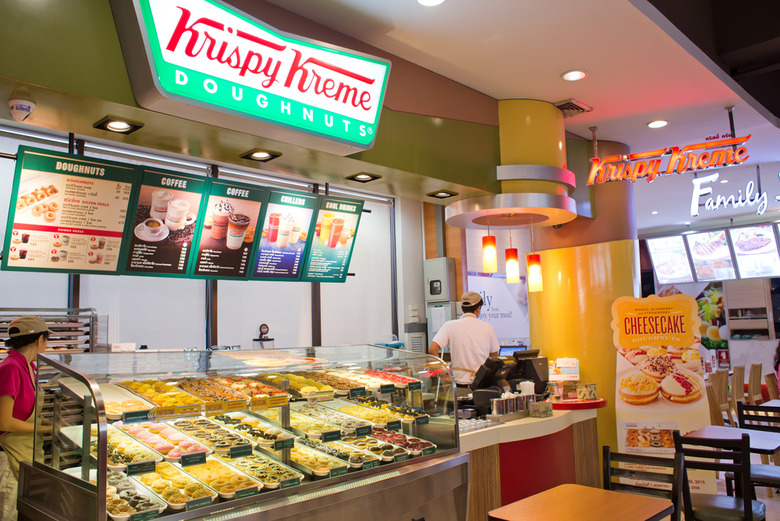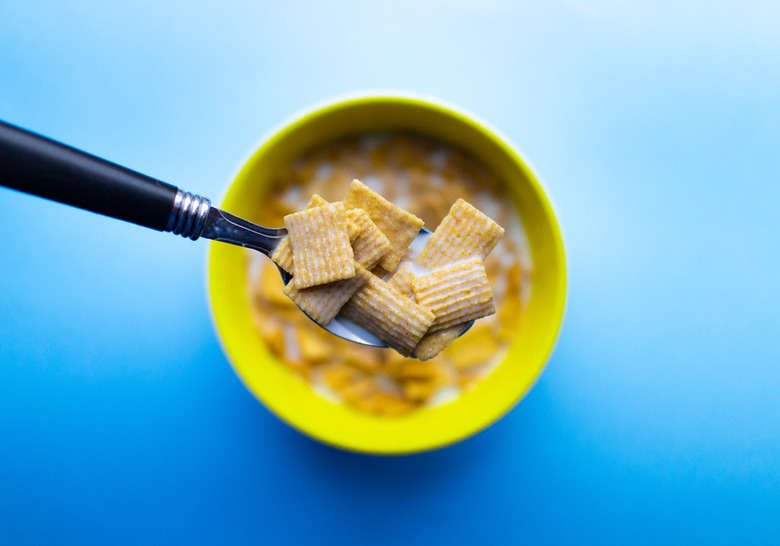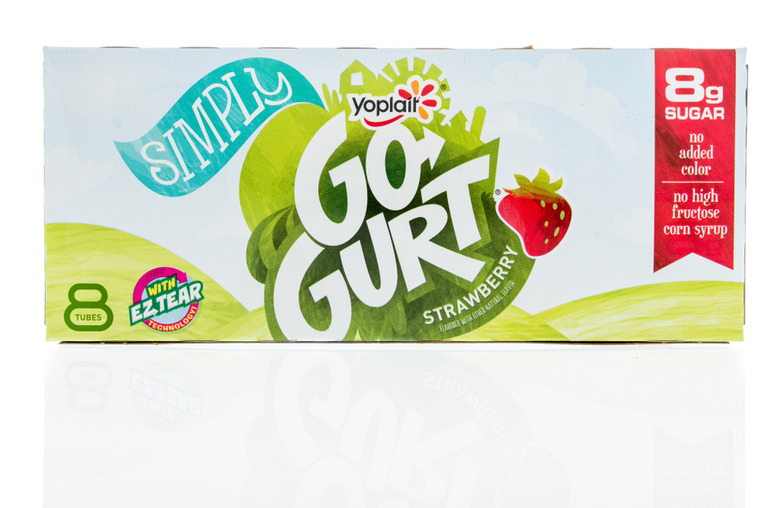What Breakfast Looked Like The Year You Were Born
Its options might have changed over the years, but breakfast has long been touted as the most important meal of the day.
Breakfast cereal has changed massively. Eggs have gone back and forth between being considered good for our health and not. During the late 20th century, eggs became suspect as some scientific studies saw their cholesterol levels as too high, especially in the yolk. However, there has been a return to eggs in the past decade or so with countless ways to enjoy them.
Just as American life has changed over the decades, the definition of a traditional American breakfast has too. We relied on several sources including old menus, commercials, recipe books and the website Food Timeline to help us track down what constituted the typical breakfast from 1937 until the turn of the century.
1937: Biscuits and Jam
Bisquick was invented in the 1930s as a shortcut to homemade biscuit recipes. Although biscuits weren't a new breakfast item, they made a resurgence after General Mills made a marketing push for the innovative mix. An advertisement from 1937 shows the biscuits being served with jam, two items you'll find on lots of Southern breakfast tables. And for an extra special treat, the first Krispy Kreme doughnut store opened in North Carolina in 1937.
1938: Rice Chex and instant coffee
Rice Chex made its debut in 1938, but rice was not as popular in cereal as wheat. Wheat Chex had been released three years prior and there were abundant varieties of wheat cereals. In 1938, Nescafe instant coffee was also introduced to the world. And a modern brunch favorite, chicken and waffles, was also purportedly invented in 1938 by a restaurant in Harlem New York.
1939: Rice Krispies
In 1939, Wheaties still had a stronghold on the American cereal market and was even getting to people through their TV. The cereal brand sponsored the first televised commercial sports broadcast, a baseball game between the Cincinnati Reds and the Brooklyn Dodgers. It made a lot of sense for Wheaties to be the sponsor, as it was famously endorsed by athletes and has a rich tie to sports.
1940: Spam, toast and margarine
The 1940s were all about rationing, food substitutions and making do with what we now call pantry staples. World War II was raging in Europe and Asia, and though the U.S. was not yet directly involved, food rationing and shortages were expected in the years to come. Spam, which was introduced in 1937 by Hormel, became a hit in 1940. The company called on Spam fans to create a recipe book featuring countless ways of incorporating the canned meat into meals, including breakfast.
1941: Cheerios
In 1941, General Mills debuted "Cheerioats," which was later renamed Cheerios. We don't have to wish that this breakfast cereal would come back because this product has been a mainstay on the world's breakfast tables ever since.
1942: Yogurt and Raisin Bran
Rationing was officially put in place by the United States government in 1942 and Raisin Bran was so popular that multiple cereal brands got into the game, including both Post and Kellogg. Dannon yogurt also entered the scene in 1942. Yogurt is still a great option, but make sure it doesn't have too much sugar because sugary yogurt is a so-called health food you should avoid.
1943: Cereal stays popular
If you found yourself out in California in 1943, there were plenty of staples on the menu at the historic Beverly Hills Hotel, including cereals like grape-nuts, shredded wheat and wheat bran. There were also more high-end options like poached eggs on toast or wheat or buckwheat cakes with ham or bacon.
1944: OJ and single-serve cereal containers
Concentrated orange juice was developed in the 1940s but not patented until after WWII, which speaks to the beverage's popularity on breakfast tables at this time. In the name of food rationing, single-serve cereal containers were also introduced in the 1940s.
1945: Orange Juice and cereal surprises
If you were a kid in 1945, your box of cereal was coming with a little something extra — a surprise. Sticking with the juice trend from the year prior, orange juice topped with mint was a trendy breakfast beverage in 1945.
1946: Betty Crocker kitchens are formally opened
World War II was now over and rationing ceased. That meant breakfast staples including coffee and sugar and certain meats were more easily accessible. The Betty Crocker Kitchens were formally opened in 1946. The brand started with soups and cakes but would grow to be influential in all aspects of American cooking.
1947: Tomato juice, cereal and creamed diced chicken
Juice and cereal were still very much at the forefront of breakfast items in 1947, but during this time, V8 Cocktail Vegetable Juice, including the tomato flavor, were becoming popular.
1948: Milk got more interesting
Cereal was still popular, but in 1948, Nestle introduced Quik, a fast and easy way to make chocolate milk, forever changing not only breakfast but lunch and snack time as well and cementing itself in the pantheon of delicious childhood snacks.
1949: Cheerios
Pillsbury published its first recipe magazine in 1949. Cheerios also continued to be prominent on breakfast tables and even sponsored the popular series "The Lone Ranger."
1950: Cereal and Coffee
Sugar Pops by Kellogg's were introduced in 1950 as a new cereal (they later became Corn Pops). Dunkin' Donuts also opened in 1950 and would eventually dominate the coffee and breakfast game for years to come.
1951: Orange juice and coffee cake
Tropicana products were introduced in 1947 and quickly made it to breakfast tables across the country in the following years. Orange juice would often be served with a sweet treat like Danish coffee cake. How popular were citrus and coffee cake? The winner of the Pillsbury Bake-Off the year before was an orange kiss-me cake, a sweet and tangy streusel.
1952: Kellogg’s Frosted Flakes
Tony the Tiger also made it onto the breakfast scene in the 1950s. Kellogg's released Frosted Flakes cereal, which was a hit with families at breakfast time. Coffee also got a little competition. In 1952, Lipton introduced the four-sided tea bag.
1953: Eggo Waffles
Eggo Frozen Waffles were introduced in 1953, making it a breeze to get breakfast from toaster to table. Originally called Danny's Donuts, what came to be Denny's launched in 1953 in California.
1954: Trix cereal
Silly rabbit, Trix are for kids. The colorful Trix cereal was introduced in 1954 by General Mills and was the first fruit-flavored cereal on the market, continuing the trend of sugary cereals on American breakfast tables. Carnation also released nonfat dry milk. Pillsbury rolled out its now-iconic cinnamon roll in a can.
1955: Special K cereal with toast and coffee
Special K breakfast food was introduced in 1955 and made it onto the menu of restaurants across the country as part of the "Quick K" breakfast, which included toast and coffee. 1955 was also the year the first Waffle House restaurant opened.
1956: Toast with margarine
Margarine was a popular spread in the 1950s, in part a holdover due to the rationing of butter during WWII. In 1956, margarine sales were on the verge of surpassing those of butter. So it wasn't uncommon to find a slice of toast slathered with margarine with a side of bacon and eggs.
1957: Scratch no more
Americans were definitely eating cinnamon rolls and biscuits for breakfast, but most often, they were definitely not homemade. By 1957, a lot of families weren't making their dough from scratch anymore. Pillsbury was selling about $5.6 million in refrigerated dough.
1958: IHOP pancakes
IHOP opened its door to the American public in 1958, quickly making its breakfast menu and pancakes a morning favorite.
1959: Cheerios continues to pop up in pop culture and on breakfast menus
The popular cartoon "Rocky and His Friends" was fueled both literally and figuratively by Cheerios. The cereal not only sponsored the show, but Rocky and Bullwinkle were also featured in advertisements eating the Cheerios.
1960: Move over muffins and toast
In 1960, Lender's Bagels started freezing and selling bagels to the masses. This led to the addition of bagels on many more breakfast tables.
1961: Pancakes and syrup
The main breakfast everyone was talking about in 1961 was "Breakfast at Tiffany's." But the average American was chowing down on pancakes drizzled with Mrs. Butterworth's syrup, which was introduced this year. Life cereal also entered the scene.
1962: Kellogg’s cereal with orange juice
Kellogg's continued to dominate breakfast menus across the country, but Tang made the biggest breakfast splash in 1962. Astronaut John Glenn drank the fruit-flavored mixture in his Mercury capsule while becoming the first American to orbit the planet.
1963: Sugar rush
Healthier wheat cereals fully transitioned to more sugary ones as products like Froot Loops and Cap'n Crunch were introduced in 1963.
1964: Pop-Tarts
The sugar kick continued as Pop-Tarts, one of those tasty childhood favorites, were introduced in 1964. The still-popular snack and breakfast option came out the same year as General Mills' Lucky Charms. Nothing was spared to capture the imaginations of young cereal eaters. According to General Mills, the rollout of Lucky Charms was one of the most expensive of its time and featured full-color ads in Sunday comics and comic books as well as animated ads.
1965: Carnation Instant Breakfast
Come 1965, many Americans were skipping a sit-down breakfast to keep up with the evolving times. Carnation Instant Breakfast, a powder that could "make milk a meal," was introduced to cater to this new lifestyle. For those who were slowing down and enjoying breakfast, the iconic Pillsbury doughboy was born.
1966: Instant oatmeal
Quaker instant oatmeal was introduced in 1966, providing a hot and sweet alternative to the cereals that had been recently popular. Kids also found themselves eating breakfast outside of the home. The U.S. school breakfast program began a pilot program.
1967: Plastic
The biggest change to breakfast in 1967 wasn't so much what was on the plate as what was next to it. Milk began to move from glass jugs and cartons to plastic containers.
1968: Corn Flakes
Kellogg's Corn Flakes had been around since the 1950s, but the popular mascot, Cornelius the Rooster, was fully revealed in 1968, making the cereal even more of a hit.
1969: Eggo Waffles
Though this popular breakfast item was a hit in the '50s, Kellogg bought it in 1968 and made it the top breakfast choice of 1969.
1970: Frosted Mini-Wheats
Kellogg's Frosted Mini-Wheats — the crunchy cereal with 10 layers of wheat topped with frosting — was introduced nationally in 1970. The world was also introduced to the first flavored instant oatmeal in 1970, as Quaker's Maple & Brown Sugar began to be distributed regionally.
1971: Fruity and Cocoa Pebbles
In 1971, Post Foods launched Fruity Pebbles and Cocoa Pebbles. The cereal brand was the first of its kind to feature characters from a TV series or movie when it made "The Flintstones" the face of the box. Also in 1971, the world was introduced to Starbucks.
1972: Sugar Smacks cereal
Kellogg's mischievous frog mascot Dig'Em debuted as the face of Sugar Smacks, a sweetened puffed cereal, in 1972. The cereal was later renamed Honey Smacks.
1973: Recipes with granola
The '70s were an interesting time for health foods — popular home magazines were touting recipes using things like soy, and granola had the widest appeal when it came to nutritious choices. The Granola Cookbook came out in 1973, offering recipes for granola eggs Benedict, granola quiche Lorraine and other savory breakfast dishes using the ingredient.
1974: Quaker 100% Natural Cereal
Granola's appeal continued into 1974, when Quaker Oats' 100% Natural Cereal became one of the top-selling brands of cereal.
1975: McDonald’s Egg McMuffin
Although it was created in 1971, McDonald's Egg McMuffin was rolled out nationwide in 1975. Whether you grab them from your favorite fast-food stop or make them yourself, there's no denying that these sandwiches are still one of breakfast's finest options. The U.S. school breakfast program was permanently authorized.
1976: Granola bars
Portable breakfasts were in, and with the rising granola trend, Nature Valley responded. Though released in 1975, granola bars continued to make waves in 1976.
1977: McDonald’s breakfast
The complete McDonald's breakfast arrived in 1977, coupled with ad campaigns encouraging diners to enjoy pancakes, eggs and bacon under the Golden Arches. A lot of those items are still available to this day. 1977 was also the year that Yoplait yogurt was introduced to the U.S.
1978: Microwaves make waves
Microwaves became a common kitchen appliance in the 1970s, and in 1978, Pillsbury introduced microwavable pancakes to speed up breakfasts across the country.
1979: Honey Nut Cheerios
The now-classic cereal hit stands in 1979 and has been among the most popular cereals in the U.S. ever since.
1980: Classic cuisine
A snapshot of upscale dining can be found on the room-service menu of the Gramercy Park Hotel. All the classics are there, including eggs any way, bacon, ham and a bevy of beverages including orange juice, coffee and Sanka, a decaffeinated coffee drink.
1981: Get creative
General Mills decided to lend a helping hand in 1981 to consumers who were looking to spice up breakfast. This was the first year the company published a recipe magazine, "Creative Recipes with Bisquick." 1981 also saw the Food and Drug Administration approve aspartame as a sweetener, which meant sugar-free was about to change the breakfast game in everything from instant coffee to cold cereals.
1982: Yogurt continues to grow
In 1982, Yoplait was distributed nationally in its original French style, but it didn't stop there. Yoplait Light, Yoplait Custard Style and snack packs followed.
1983: Here comes Crispix
In 1983, Americans began buying in bulk as Costco entered the scene. Kellogg's also introduced Crispix to the marketplace.
1984: SlimFast shakes
Diet foods were in full swing, with SlimFast becoming a popular breakfast substitute in the '80s. This was also the year that General Mills released Cinnamon Toast Crunch.
1985: Pillsbury Toaster Strudels
Who didn't love the frozen breakfast pastry with icing? Toaster Strudels came into the world as Pillsbury's answer to Kellogg's Pop-Tart. In 1985, the world was introduced to the first Cinnabon in Seattle.
1986: Fresh bread
After years of hawking refrigerated dough, fresh bread saw a resurgence with the rise in popularity of the breadmaker. The first popular household version was marketed by Panasonic.
1987: Bran flakes
Touted as a heart-healthy option and good for lowering cholesterol, the bran craze at the breakfast table lasted for a few years beginning in 1987.
1988: Low-fat milk
In 1988, the sales of low-fat milk eclipsed those of whole milk for the first time, continuing the trend of weight-watching at breakfast. It was also the year that Cheerios released an apple cinnamon variety.
1989: Biscuit, egg and bacon
Fast food joints like McDonald's and Hardee's touted fresh biscuits as part of their quick and cheap breakfast sandwiches, which included eggs and bacon. Smoothie King became the first smoothie franchise in the U.S.
1990: Low-fat granola bars
Forget calorie counting. It was all about low-fat food products in 1990. That's why low-fat granola bars from companies like Kellogg's were a trend. Smoothies started to also pick up more popularity and Jamba Juice opened its first store.
1991: Honeycrisp apples
For anyone who enjoys apple turnovers, baked apple oatmeal or apple cinnamon French toast, 1991 was the year Honeycrisps came into being. A little bit sweet and a little bit tart, the flavor and texture of this apple makes it perfect for baking.
1992: Coffee game-changer
The coffee game was on the verge of changing in 1992 as Starbucks went public with just over 160 stores. In five years' time, that would grow to more than 1,400 shops. For those watching their waistlines, breakfast started to look a little different. The newest diet trend, "Dr. Atkins' New Diet Revolution," came out in 1992 and recommended dramatically cutting carbs. This meant toast and waffles and pancakes were out, but bacon and eggs were back in.
1993: Craisins
Calling all bakers and pastry aficionados. Ocean Spray's Craisins joined the ranks of dried fruits in 1993. The sweet, dried cranberries are a yummy addition to breakfast pastries like coffee cakes, scones or muffins.
1994: Reese’s Peanut Butter Puffs
Reese's Peanut Butter Puffs were introduced in 1994. There never seems to be a shortage of Reese's spinoffs — peanut butter cup creamer debuted in 2017.
1995: French Toast Crunch cereal
It was all about the sugary cereals again. French Toast Crunch cereal made its mark in 1995. It left the shelves a few years later but returned in 2014.
1996: Croissan’wich
While Dunkin' Donuts began making bagels in 1996, Burger King was gaining on McDonald's Egg McMuffin by offering the Croissan'wich. It featured egg, cheese and sausage on a flaky croissant.
1997: Krispy Kreme expansion
To mark 60 years as an American icon, Krispy Kreme donated artifacts to the Smithsonian Institution's National Museum of American History. This followed the beginning of the doughnut company's move to expand nationally — a special treat for those living outside the southeastern states where Krispy Kreme began.
1998: Breakfast Mates
It was all about convenience in the late '90s. That's why your favorite cereals were now offered in easy to-go packs (like Breakfast Mates, which contained both cereal and milk but was short-lived).
1999: Go-Gurt
Sticking with the on-the-go vibe, Go-Gurt — portable yogurt that didn't require a spoon — was introduced in 1999. If you were going out to breakfast, you would be able to find hot and cold coffee on a menu as well as espresso options and more complicated coffee drinks like cappuccinos and macchiatos.
2000: Milk ‘n Cereal bars
The new millennium kicked off with the ultimate quick breakfasts: General Mills' Milk 'n Cereal bars. They're still around today but might make a better treat than breakfast. Given that they're high in sugar and low in protein, eating them would certainly qualify as a diet mistake you're making before noon.
More from The Daily Meal:
19 Facts About Diet Soda That Might Make You Finally Stop Drinking It
Vitamins You're Probably Missing
